
The longhorn beetles (Cerambycidae), also known as long-horned or longicorns, are a large family of beetles, with over 35,000 species described.

The Chrysomeloidea are an enormous superfamily of beetles, with tens of thousands of species. The largest families are Cerambycidae, long-horned beetles, with more than 35,000 species, and Chrysomelidae, leaf beetles, with more than 13,000 species.
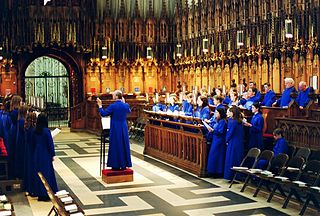
Decani is the side of a church choir occupied by the Dean. In English churches, this is typically the choir stalls on the south side of the chancel. The opposite side is known as Cantoris. The abbreviations "Dec." and "Can." are used.

Cantoris is the side of a church choir occupied by the Cantor. In English churches this is typically the choir stalls on the north side of the chancel, although there are some notable exceptions, such as Durham Cathedral, Ely Cathedral, Carlisle Cathedral and Southwell Minster. The opposite side is known as decani, which is where the dean sat. The abbreviations "Dec." and "Can." are used.
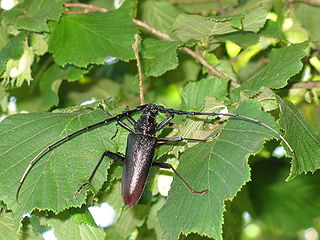
Cerambyx is a genus of beetles in the family Cerambycidae. They are commonly known as capricorn beetles, as their strong, stout and curved antennae, each segment of which flares towards the tip, are reminiscent of the horns of an Alpine Ibex or "capricorn".
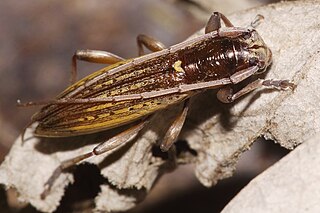
Xylotoles is a genus of flat-faced longhorns in the beetle family Cerambycidae. There are more than 15 described species in Xylotoles found mainly in New Zealand, Australia, and surrounding islands.
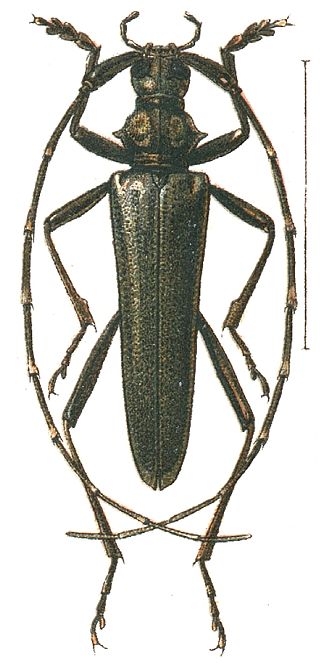
The Disteniidae are a small family of beetles in the superfamily Chrysomeloidea, traditionally treated as a group within the Cerambycidae.
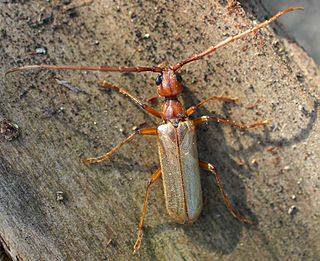
The Vesperidae are a small family of beetles, normally classified within the family Cerambycidae, of heterogeneous aspect but all characterised by larval stages related to roots of herbaceous plants or trees

Clytus arietis, the wasp beetle, is a wasp-mimicking longhorn beetle species in the genus Clytus.

Cerambycini is a tribe of longhorn beetles classified under the subfamily Cerambycinae.

Achrysonini is a tribe of Long-Horned Beetles in the beetle family Cerambycidae. There are more than 20 genera and 50 described species in Achrysonini. They are found mainly in the Americas, but also in Europe, Asia, and Africa.

Callidiini is a tribe of longhorn beetles in the family Cerambycidae. There are more than 30 genera and 180 described species in Callidiini.

Criodion is a genus of Long-Horned Beetles in the beetle family Cerambycidae. There are about 11 described species in Criodion.
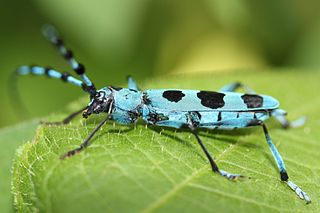
Compsocerini is a tribe of beetles in the subfamily Cerambycinae, containing the following genera:

Pronuba is a genus of long-horned beetles in the family Cerambycidae. There are about five described species in Pronuba, found in Central and South America.

Trachyderini is a tribe of long-horned beetles in the family Cerambycidae. There are at least 140 genera and 650 described species in Trachyderini.
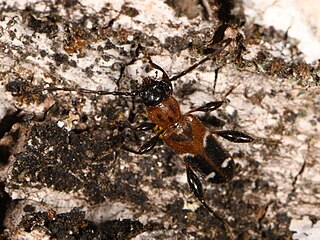
Phymatodes obliquus is a species of longhorn beetle in the family Cerambycidae. It is found Pacific coastal area of North America and Baja California.
Dmytro Zajciw was a Ukrainian and Brazilian entomologist, notable for his collection and for his many beetle discoveries. He was born in Velyka Mykhailivka, Ukraine and died in Rio de Janeiro, Brazil. He was the author of Two new genera and species of neotropical Longhorn beetles , 1957, Contribution to the study of Longhorn beetles of Rio de Janeiro , 1958, and was the first to describe the genera Adesmoides and Pseudogrammopsis, as well as the species Beraba angusticollis and Mionochroma subaurosum, among many others.

Nadezhdiella is a genus of longhorn beetles in the family Cerambycidae. There are about five described species in Nadezhdiella.

Lucanus cantori is a species of stag beetle found in India.


















